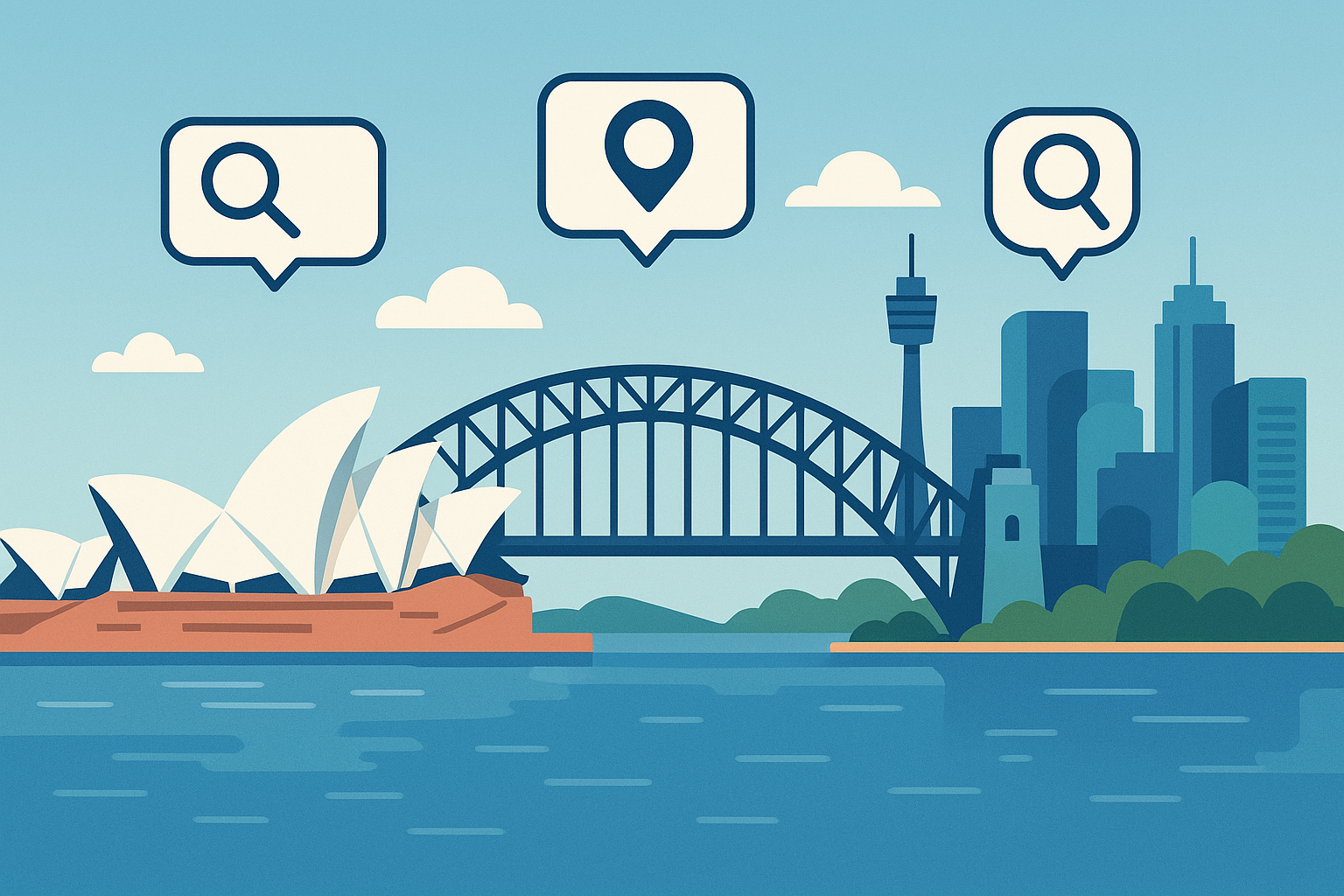Here’s a crazy stat – Australian brands are projected to spend $1.5 billion on SEO services in 2025 – a 12% increase from 2024. That’s a lot of coffee money! But most of it will be wasted because they’re not thinking about what makes Sydney different.
I’ve been working in Sydney’s local SEO trenches for years, and I can tell you that what works in Melbourne or Brisbane falls flat here. Sydney has its own rules, its own search patterns, and its own consumer behaviors that require completely different strategies.
Look, I get it. You’ve probably tried targeting every suburb in Sydney and wondered why your phone isn’t ringing. Sound familiar? You’re ranking well but still not getting customers? That’s because most businesses treat Sydney like it’s just another place to optimize for. But it’s not.
- Sydney’s harbor geography creates unique search patterns – optimize for directional terms like “North Shore” and “Eastern Suburbs” instead of just suburb names
- Transport hubs are goldmines for local SEO – target “[service] near [station name]” searches within 800m of major stations
- Dominating SERP features beats traditional rankings in Sydney’s saturated market – focus on Google Business Profile optimization and local pack positioning
- Competitor gap analysis reveals underserved suburbs and seasonal opportunities most businesses overlook
- Genuinely local content addressing Sydney-specific concerns (traffic, development, local events) builds stronger authority than generic location pages
- Sydney’s mobile-first users demand commuter-optimized experiences with one-handed navigation and quick-loading contact info
Sydney’s Geographic SEO Microclimates
Look, I’ve been doing SEO in Sydney for years, and here’s something that drives me crazy – everyone treats this city like it’s just another place to optimize for. But Sydney’s not like Melbourne or Brisbane. The harbor literally splits everything in half, and it changes how people think about getting around.
I remember working with a cafe owner in Neutral Bay who was pulling his hair out because he wasn’t getting customers from the city, even though he was technically only 15 minutes away. Turns out, most office workers just don’t think about crossing the bridge for their lunch break. It’s not about distance – it’s about mental geography.
Most businesses fail here because they don’t understand how Sydney residents actually search for services based on geographic and transport considerations. Implementing effective local seo sydney strategies means recognizing these geographic nuances and optimizing accordingly.
Here’s the thing about Sydney that most SEO people miss: People don’t search by suburb names as much as you’d think. They search by areas they can actually get to without wanting to throw their phone out the window.
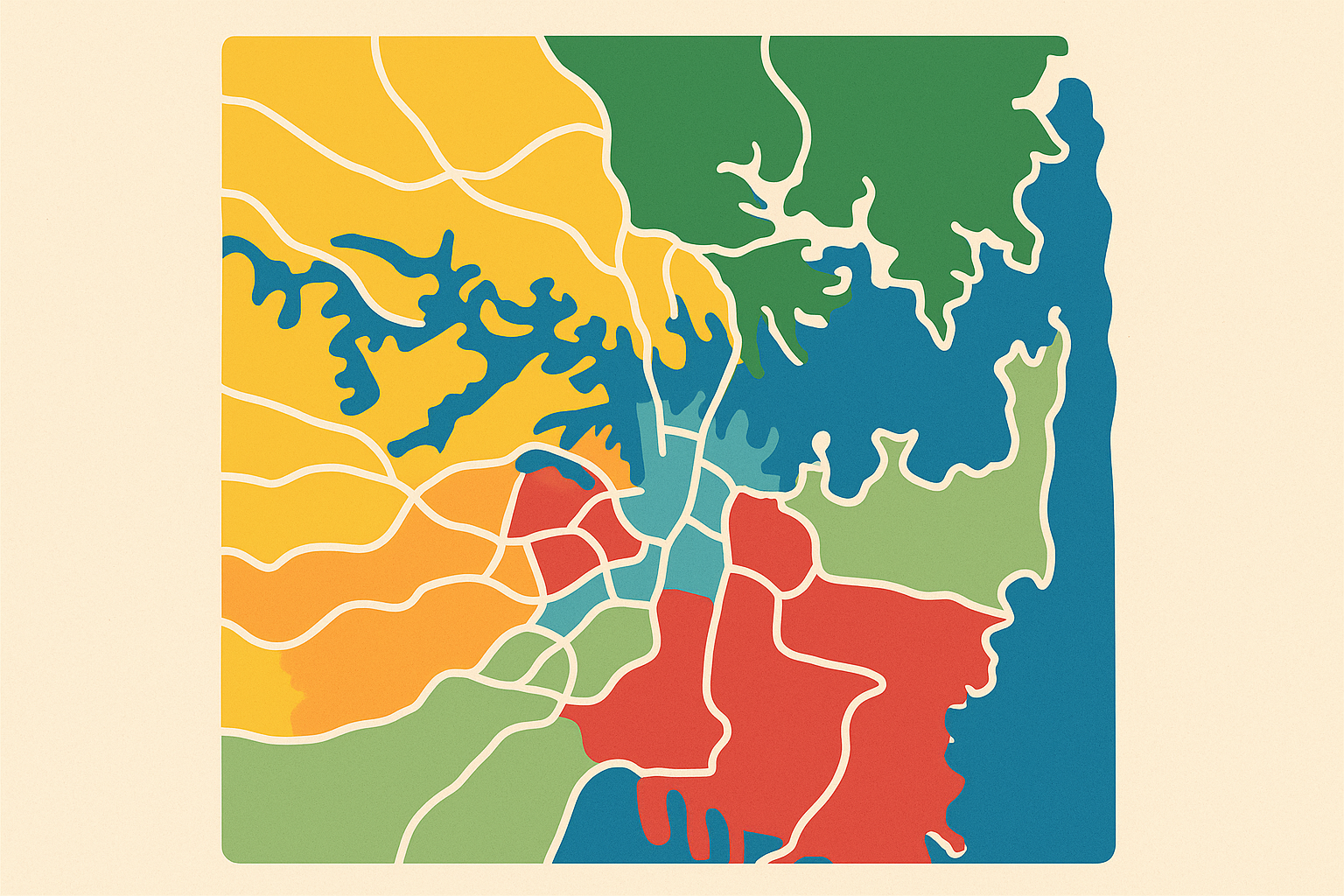
The Harbor Effect on Search Intent
You know what I discovered after analyzing thousands of search queries? Sydneysiders have this weird psychological barrier about the harbor. It’s like there’s an invisible wall running through the middle of the city.
When someone in Chatswood searches for a “physio North Shore,” they’re not just being picky – they’re being practical. They know that crossing the harbor means dealing with bridge traffic, tolls, and parking nightmares. So they stick to their side.
I had this lightbulb moment when I realized that 46% of all Google searches are looking for local information. But in Sydney, “local” doesn’t mean what it means everywhere else. Local means “on my side of the harbor” or “along my train line.”
Directional Search Modifiers in Harbor Cities
Forget everything you know about suburb targeting for a second. Most Sydney businesses waste months creating pages for Mosman, Cremorne, Neutral Bay, and Kirribilli separately. Meanwhile, their customers are just searching for “dentist North Shore.”
Understanding how to improve your local SEO in 2023 principles becomes essential when adapting these strategies for Sydney’s unique geographic challenges.
Here’s what actually works:
- Stop thinking suburbs, start thinking regions
- “North Shore” gets way more searches than individual suburb names
- “Eastern Suburbs” is gold for anything from Bondi to Double Bay
- “Inner West” covers a massive area that people actually think of as one place
Sydney Geographic Search Optimization Checklist:
- ☐ Audit Google Analytics for directional search terms (North Shore, Eastern Suburbs, Inner West)
- ☐ Create regional landing pages targeting geographic clusters
- ☐ Optimize for “near [landmark]” searches using harbor bridges and beaches
- ☐ Map customer locations against major transport routes
- ☐ Include cross-harbor accessibility information in content
- ☐ Target time-sensitive searches based on commuter patterns
Quick wins you can do today:
1. Jump into your Google Analytics right now and look for directional search terms
2. Create landing pages for regions, not just suburbs
3. Use landmarks people actually know (like “near the Harbour Bridge” instead of just postcodes)
I helped a dental practice in Chatswood figure this out. Instead of having separate pages for every tiny suburb, we created one killer “North Shore Dentist” page. Result? Their leads went up 340% because we were matching how people actually search.
Cross-Harbor Search Behavior Patterns
This might sound obvious, but I see businesses mess this up constantly – if you’re south of the harbor, don’t waste time trying to rank for North Shore searches. It’s like trying to sell ice to penguins.
I learned this lesson the hard way with a plumbing client. We spent three months optimizing for searches across the whole city before realizing that 90% of their actual customers lived within a 20-minute drive. The harbor wasn’t just a geographic barrier – it was a customer behavior barrier.
What this means for your business:
1. Map where your actual customers come from (not where you think they should come from)
2. Focus your SEO efforts on your side of the city first
3. Only target cross-harbor if you’re offering something really specialized
Suburb Hierarchy and Search Volume Distribution
Here’s where most businesses get it completely wrong. Everyone wants to rank for Bondi or Paddington because they sound fancy, but the real money is often in clusters of smaller suburbs that nobody talks about.
I call it the “suburb cluster goldmine.” Take the Inner West – individually, places like Dulwich Hill or Petersham might only get 50 searches a month. But group them together? You’re looking at serious traffic.
Professional local seo services sydney providers recognize this pattern and develop cluster-based strategies that capture broader search intent.
| Suburb Cluster | Combined Monthly Searches | Individual Suburb Average | Opportunity Score |
|---|---|---|---|
| Inner West Cluster | 2,400 | 200 | High |
| Northern Beaches Group | 1,800 | 150 | Medium |
| Eastern Suburbs Hub | 3,200 | 400 | Medium |
| Western Sydney Network | 1,600 | 100 | High |
| South Sydney Belt | 1,200 | 120 | High |
The Satellite Suburb Strategy
This strategy completely changed how I approach Sydney SEO. Instead of fighting for scraps in oversaturated areas, find the suburb clusters that make sense together.
Here’s a real example: A home cleaning service was struggling to rank in the Eastern Suburbs because everyone and their dog was targeting Bondi. So we pivoted to a cluster approach – Maroubra, Malabar, Little Bay, and La Perouse. Individually small, but together they represented a goldmine of untapped searches.
How to find your suburb clusters:
- Look for suburbs connected by the same train line
- Group areas with similar demographics
- Find suburbs that share shopping centers or schools
- Use Google Trends to see which suburbs people search for together
Transport Network SEO Optimization
Okay, this is where it gets really interesting. Sydney’s got this massive transport network, and most businesses completely ignore it for SEO. But think about it – how many times have you searched for “coffee near Central Station” when you’re running late for work?
Those “near [station]” searches are pure gold because they’re high-intent. Someone searching for a barber near Town Hall at 8am isn’t browsing – they need a haircut before their meeting.
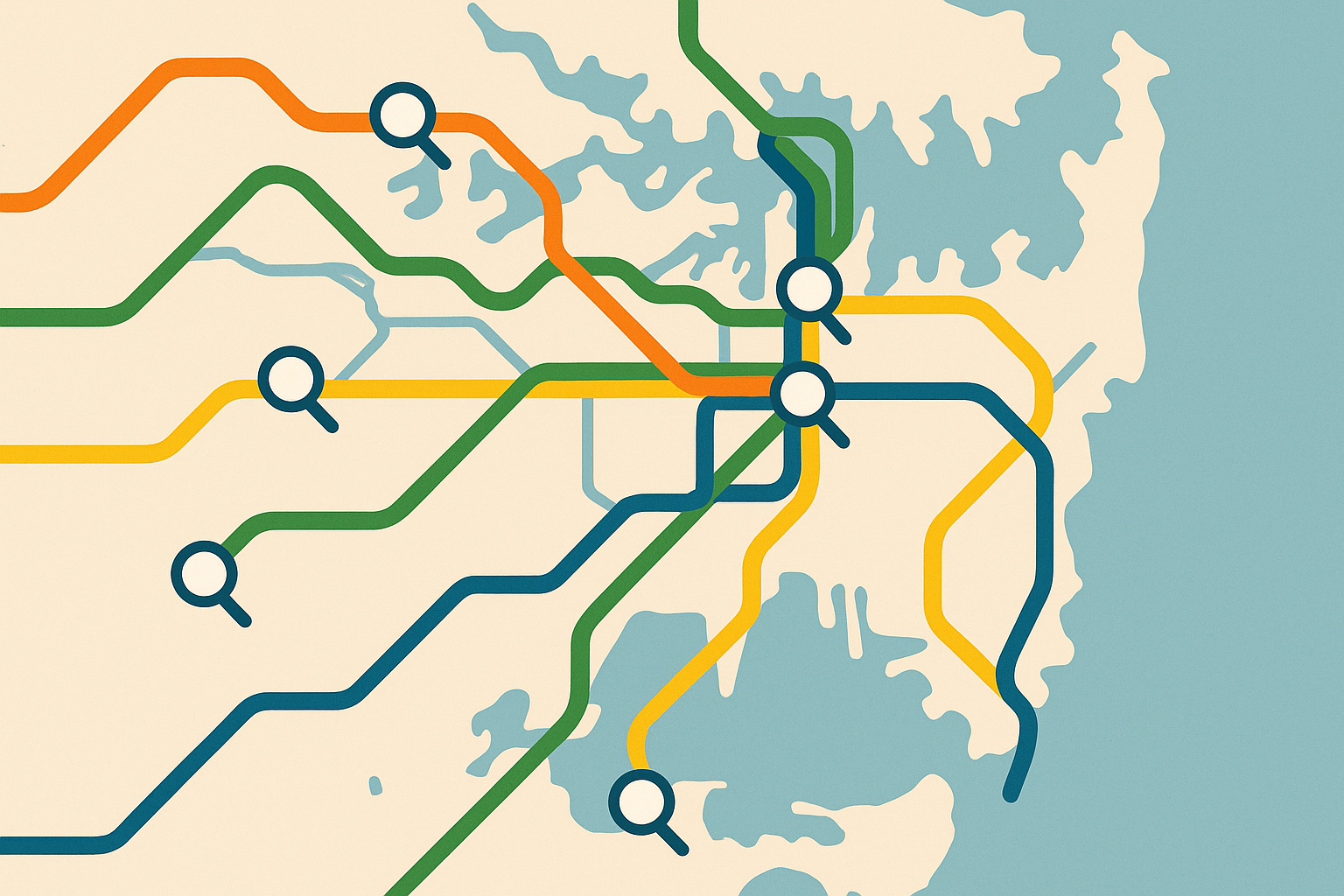
Station-Proximity Search Capture
I discovered this by accident when helping a sandwich shop near Wynyard. We added “near Wynyard Station” to their Google Business Profile, and boom – lunch orders went through the roof. Turns out, office workers were searching for lunch spots along their commute route.
The station proximity goldmine:
- Target major stations within 800 meters of your business
- Use “near [station name]” in your content naturally
- Add transport info to your Google Business Profile
- Think about what commuters need at different times of day
Action step for today: Go to Google Maps, find the three closest train stations to your business, and check if you’re optimizing for “[your service] near [station name]” searches. If not, you’re missing easy money.
Peak Hour Search Pattern Optimization
This blew my mind when I first noticed it. Search patterns in Sydney follow the train timetable. Coffee shops get slammed with searches between 7-9am. Lunch spots peak from 11:30am-1:30pm. After-work services light up from 5-7pm.
Most businesses treat search traffic like it’s the same all day. But if you time your content updates and social posts around these patterns, you can ride the wave instead of fighting against it.
Action Steps:
- Analyze your search traffic by hour to identify commuter-driven patterns
- Schedule social media posts and local content updates to align with peak search times
- Optimize for mobile-first searches during commute hours (7-9am, 5-7pm)
The Competitive Intelligence Advantage
Let me be brutally honest – copying your competitors in Sydney is a waste of time. Everyone’s doing the same boring stuff, fighting over the same keywords, and wondering why their phone isn’t ringing.
The real wins come from finding what everyone else is NOT doing. I call it “competitive gap mining,” and it’s how small businesses can beat the big players.
Recent developments in the SEO landscape emphasize this point further. As noted in “The New SEO Reality After March 2025” at major industry conferences, “recent changes in Google’s algorithms mean SEOs have new challenges ahead of them,” making competitive intelligence even more crucial for staying ahead.
Local SERP Feature Monopolization
Here’s something that might surprise you – I’d rather be #3 with a killer Google Business Profile than #1 with a boring website link. Why? Because SERP features grab attention and clicks. That’s where the actual money is.
Most Sydney businesses are still stuck in 2015, optimizing for blue link rankings while the smart operators are dominating the features that people actually click on.
Learning how to effectively use Google Business Profile becomes critical for dominating these valuable SERP features.
With businesses ranking first in local searches capturing 24.4% of all clicks, dominating SERP features becomes even more critical for maximizing your share of local search traffic.
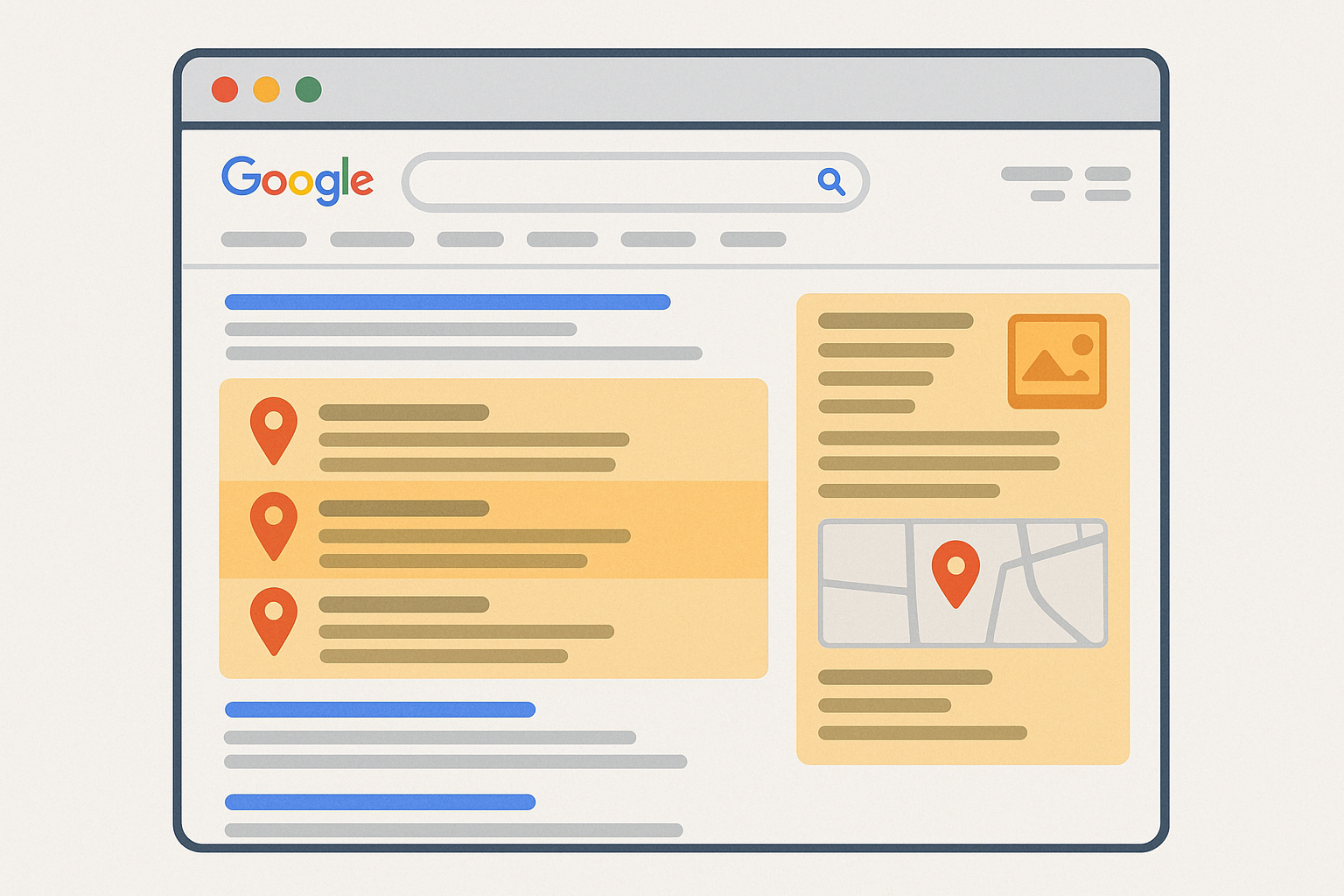
Google Business Profile Feature Optimization
Your Google Business Profile is like prime real estate in the CBD, but most businesses treat it like a vacant lot. I see competitors with complete profiles that still look dead because they’re not using the advanced features.
Here’s what actually moves the needle:
- Weekly posts about local Sydney events (not just “we’re open” posts)
- Proactive Q&A sections where you answer questions before people ask them
- Review responses that include location-specific information
- Photos that actually show your local area, not just stock images
Google Business Profile Optimization Checklist:
- ☐ Complete all profile sections (description, hours, services, attributes)
- ☐ Upload high-quality photos (exterior, interior, products, team)
- ☐ Create weekly GBP posts with local Sydney events and news
- ☐ Proactively seed Q&A section with common customer queries
- ☐
- ☐ Respond to all reviews with location-specific information
- ☐ Add service areas covering your target suburbs
- ☐ Use local Sydney terminology in business description
- ☐ Enable messaging and respond within 24 hours
I helped an accounting firm in the CBD increase their local pack clicks by 180% just by changing their description from “Accounting services in Sydney” to “Tax specialists serving North Shore professionals – walking distance from Chatswood Station.” The specific location reference made all the difference.
Quick win: Right now, go look at your three biggest competitors’ Google Business Profiles. I bet at least two of them have boring descriptions and no recent posts. That’s your opportunity.
Local Pack Positioning Psychology
Sydney consumers are pretty savvy. They don’t just click the first result anymore – they scan for social proof, unique value, and local credibility. Generic business descriptions get ignored faster than a parking meter in the city.
The psychology here is different from other cities because Sydneysiders expect higher standards. They want to know you actually understand their area, their problems, and their lifestyle.
Action Steps:
- A/B test different business descriptions focusing on unique value propositions
- Optimize for review velocity rather than just review volume
- Use local Sydney terminology and references in your business description
Competitor Gap Analysis Framework
Most competitor analysis is backwards. People copy what’s working instead of finding what’s missing. But in Sydney’s crowded market, the biggest opportunities are in the gaps everyone else leaves behind.
I’ve had way more success targeting underserved areas than trying to out-compete established players on their home turf. It’s like finding an empty beach in summer – once you know where to look, it’s obvious.
This approach to local seo sydney requires systematic gap identification and strategic exploitation of competitor weaknesses.
| Gap Analysis Category | Opportunity Level | Time to Exploit | Resources Required |
|---|---|---|---|
| Underserved Suburbs | High | 3-6 months | Medium |
| Seasonal Content Gaps | Medium | 1-3 months | Low |
| Service Area Voids | High | 2-4 months | Medium |
| Transport Hub Targeting | Very High | 1-2 months | Low |
| Local Event Coverage | Medium | Immediate | Low |
The Service Area Void Strategy
Here’s a pattern I see constantly: businesses claim to serve “Greater Sydney” but their actual content focuses on maybe 3-4 suburbs. This leaves massive gaps that smart operators can exploit.
I once mapped out where 20 plumbers claimed to serve versus where they actually had content and citations. The gaps were huge – entire areas with demand but no real local presence.
How to find these voids:
- Map your competitors’ claimed service areas vs their actual content focus
- Look for suburbs mentioned on their website vs suburbs they actually create content about
- Check their Google Business Profile service areas vs their citation locations
- Build citations specifically targeting these underserved locations
Seasonal Search Opportunity Mining
Sydney’s event calendar is packed, but most businesses ignore it completely. Royal Easter Show, Vivid Sydney, summer beach season – these create massive search spikes that you can plan around.
Your competitors are probably treating search traffic as constant year-round, missing these golden opportunities. I helped a photography business triple their bookings just by creating content around Sydney’s event calendar.
Action Steps:
- Analyze seasonal search trends for your industry over the past 3 years
- Create content calendars aligned with Sydney-specific seasonal patterns
- Optimize for event-based searches (Royal Easter Show, Vivid Sydney, etc.)

Industry-Specific Local Ranking Factors
Cookie-cutter local SEO strategies fail because different industries have completely different ranking factors in Sydney. What works for restaurants doesn’t work for plumbers. What works for retail doesn’t work for professional services. Yet most agencies apply the same template to every business and wonder why results vary so dramatically.
Understanding how to choose the best local SEO company becomes crucial when you need industry-specific expertise.
Service vs. Retail Location Optimization
Service businesses and retail stores need fundamentally different local SEO approaches, but most strategies treat them identically. Service businesses should optimize for “comes to you” and mobile searches. Retail needs foot traffic optimization and “open now” queries. The citation strategies, content focus, and technical requirements are completely different.
Action Steps:
- Optimize service businesses for “mobile” and “comes to you” searches
- Focus retail optimization on foot traffic and “open now” queries
- Adjust citation strategies based on your business model (service area vs. storefront)
The Content Localization Matrix
Okay, can we talk about how terrible most “local” content is? I see businesses creating location pages that could apply to any city in Australia. They mention the Opera House, talk about “serving the Sydney area,” and call it local content. It’s painful.
Real content localization means understanding what Sydneysiders actually care about – not just geographic locations.
The importance of genuinely local content is highlighted by current industry discussions around website optimization for Sydney businesses. As recent analysis of Sydney restaurant and café websites shows, “nearly 60% of restaurant-goers in Australia chose their dining options based on a restaurant’s online presence,” emphasizing how local content quality directly impacts business success.
Sydney-Specific Content Themes
You want to know what locals actually search for? Traffic nightmares. Parking struggles. Council approval processes. Weather impacts on outdoor plans. Local development battles that affect their daily lives.
When you address real Sydney concerns in your content, you build authority that generic location pages can never match.
This isn’t about keyword stuffing suburb names. Mastering how to create location-specific content to boost local SEO strategies specifically for Sydney’s unique market dynamics.

Local Issue Integration Strategy
Sydney residents have strong opinions about local issues. Smart businesses weave these concerns into their content naturally, without being preachy about it.
A home renovation company I worked with created content about council approval processes in different Sydney areas. Not sexy, but incredibly valuable to homeowners dealing with red tape. Result? They became the go-to renovation experts for people navigating Sydney’s building regulations.
Sydney Local Content Topics:
- Council development approvals and building regulations
- Public transport delays and alternative routes
- Parking restrictions and meter zones
- Beach access and seasonal considerations
- School zone traffic and safety concerns
- Local shopping center renovations and closures
- Weather impact on outdoor events and activities
Today’s homework: Pick one local issue that affects your customers and create helpful content about it. Don’t make it salesy – just be genuinely useful.
A Sydney landscaping company created a comprehensive guide titled “Navigating Council Approvals for Backyard Renovations in Sydney’s Inner West.” The post addressed specific council requirements for Marrickville, Newtown, and Leichhardt, resulting in a 250% increase in consultation bookings from homeowners in these areas who found the locally-specific advice invaluable.
Community Event Amplification
Sydney’s event calendar is crazy busy, creating content opportunities that most businesses completely ignore. Instead of just mentioning events, create valuable content around them.
Festival guides, event parking tips, weather considerations, crowd management advice. This positions you as a local expert while capturing event-related search traffic.
Action Steps:
- Create a calendar of local events relevant to your target audience
- Develop content strategies around major Sydney events and festivals
- Partner with local event organizers for content collaboration opportunities
Hyperlocal Authority Building
Local authority isn’t about claiming to serve an area – it’s about proving you understand and contribute to the community. Sydney consumers can spot fake local expertise from Bondi to Blacktown.
Local Citation Ecosystem Mastery
Sydney has unique directories, community websites, and local publications that most businesses never discover. These aren’t the standard citation sources every SEO tool recommends – they’re genuinely local platforms that carry real weight.
Finding and leveraging these sources builds authority that generic Yelp listings can’t match.
Action Steps:
- Research Sydney-specific directories and local business listings
- Identify community websites and local blogs in your service areas
- Build relationships with local publications for potential coverage and citations
Micro-Influencer Local Partnerships
Sydney’s micro-influencer scene is massive and largely untapped for local SEO. I’m not talking about celebrity influencers – I mean local personalities with engaged community followings.
Partnering with them creates authentic local content and citations while building genuine community connections that search engines recognize as authority signals.
Action Steps:
- Identify local micro-influencers in your service areas and industry
- Develop partnership strategies that benefit both parties’ local visibility
- Create collaborative content that showcases local expertise and community involvement
Technical Optimization for Sydney’s Digital Infrastructure
Sydney’s digital infrastructure is all over the place. You’ve got fiber in the CBD and patchy mobile coverage in the outer suburbs. But here’s the thing – Sydney users expect fast, mobile-optimized experiences because they’re digitally savvy.
Technical SEO here isn’t just about meeting minimum standards – it’s about exceeding the high expectations of people who know what good digital experiences look like.
Advanced local seo sydney technical optimization requires understanding these infrastructure variations and user expectations.
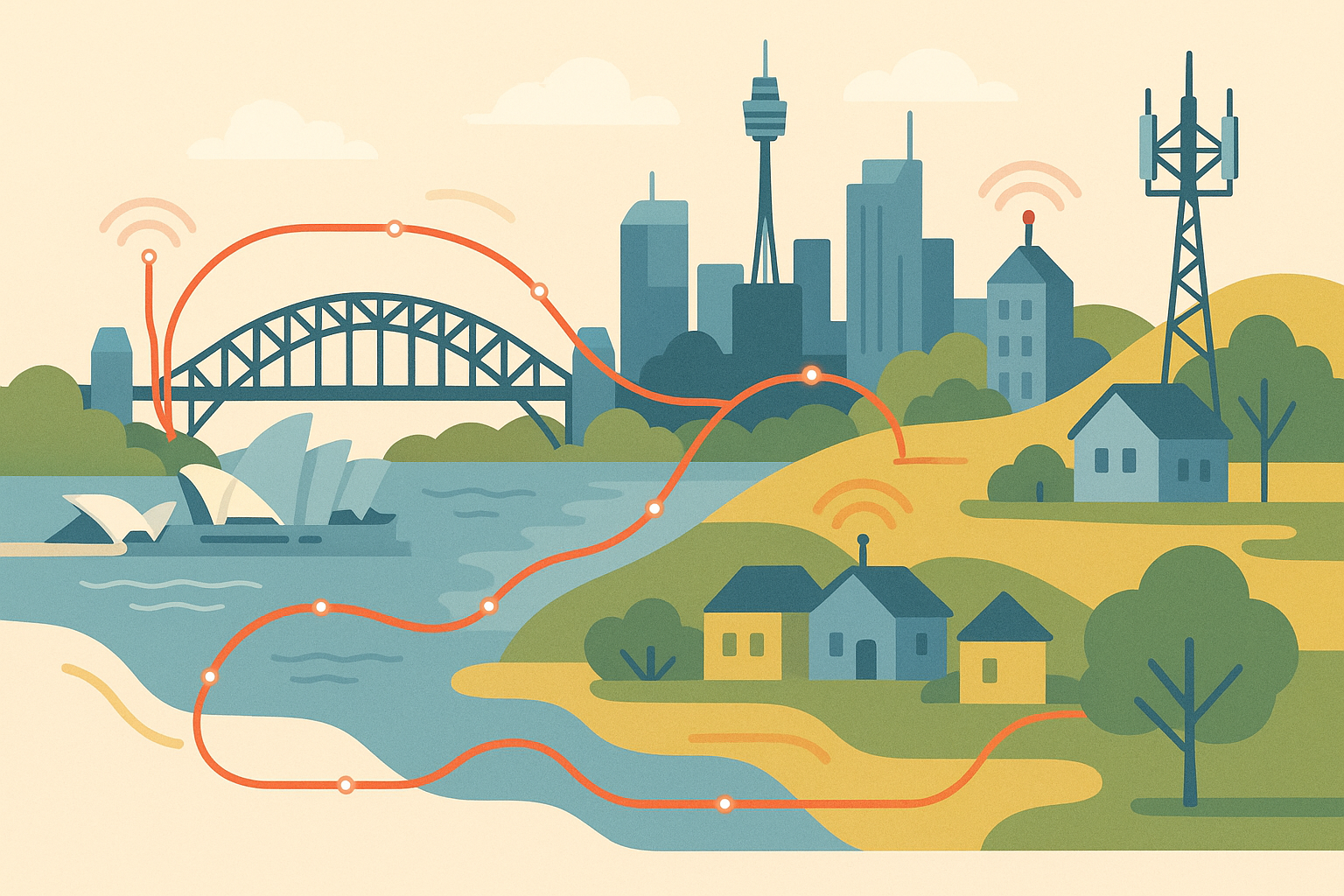
Mobile-First Sydney Optimization
Sydney’s mobile usage rates are through the roof, especially during commute hours. But mobile optimization here goes beyond responsive design. You need to understand how people use their phones while commuting, walking, or multitasking.
One-handed navigation isn’t a nice-to-have – it’s a requirement when someone’s hanging off a train handle searching for services.
With 68% of searches in Australia conducted on mobile devices, optimizing for Sydney’s mobile-first audience becomes critical for local search success.
Commuter-Focused Mobile Experience
Sydney’s extensive commuter population creates unique mobile usage patterns. People search for businesses while on trains, walking from stations, or stuck in traffic on the M4.
Your mobile experience needs to work for users who are literally on the move, often with poor signal strength and about 30 seconds of attention span.
What actually matters for mobile:
- Site loads fast on 3G networks (test it during peak hour)
- One-handed navigation for all key functions
- Contact information above the fold
- Click-to-call that actually works
- Quick-loading contact and directions pages
Mobile Commuter Optimization Checklist:
- ☐ Test site loading on 3G networks during peak hours
- ☐ Ensure one-handed navigation for all key functions
- ☐ Place contact information above the fold
- ☐ Implement click-to-call functionality
- ☐ Optimize for voice search queries
- ☐ Create quick-loading contact and directions pages
- ☐ Test functionality at major transport stations
Reality check: Test your website on your phone while standing at Central Station during peak hour. If it’s frustrating for you, imagine how your customers feel.
Location Services Integration
Sydney users rely heavily on location services for business discovery. “Near me” searches are massive here because people are constantly moving around the city.
Your technical setup needs to leverage GPS and location-based features effectively, with proper schema markup that helps search engines understand exactly where you are and who you serve.
Action Steps:
- Implement proper location schema markup for precise GPS coordinates
- Optimize for “near me” searches with location-based landing pages
- Ensure your website loads quickly on mobile networks throughout Sydney
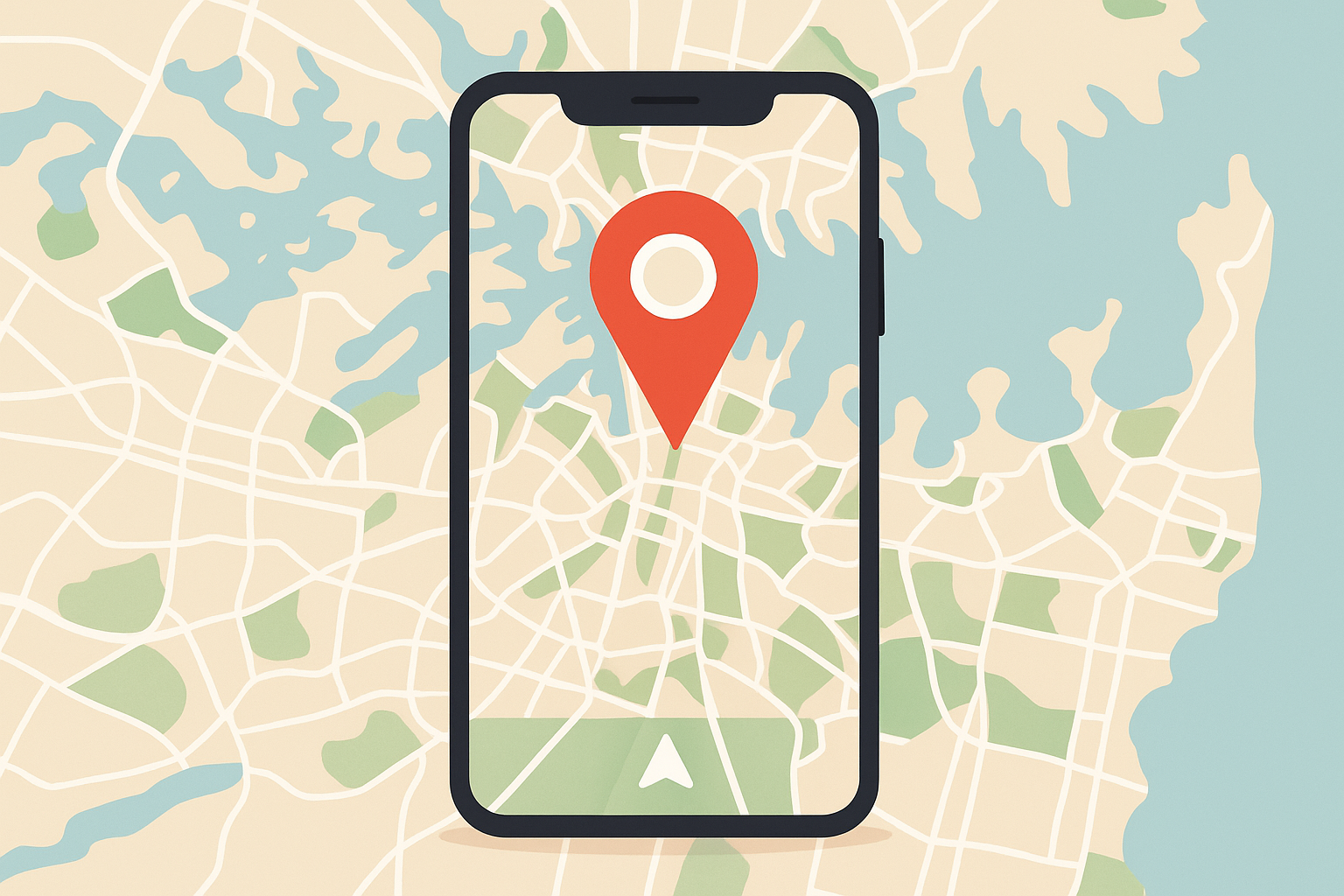
Local Schema and Structured Data Mastery
Basic schema markup isn’t enough in Sydney’s competitive environment. You need sophisticated structured data that communicates complex service areas, seasonal variations, and multi-location operations.
Most businesses implement basic LocalBusiness schema and call it done, missing opportunities to provide search engines with rich, detailed information about their local relevance.
Multi-Location Schema Strategy
Businesses serving multiple Sydney areas face a complex challenge – how do you communicate service areas without diluting local relevance signals?
The answer is sophisticated schema implementation that properly defines each location, service area, and the relationships between them. This requires going beyond basic templates to create custom structured data solutions.
Action Steps:
- Implement LocalBusiness schema for each service location
- Use Service schema to define specific service areas within Sydney
- Add Event schema for local events and community involvement
Advanced Local Schema Implementation
Beyond basic LocalBusiness schema, Sydney businesses need structured data that captures seasonal business variations, complex service delivery models, and the nuances of harbor city geography.
This includes GeoShape markup for irregular service areas, detailed opening hours with seasonal variations, and aggregate rating schemas that work across multiple locations.
Action Steps:
- Implement GeoShape schema for complex service areas spanning multiple suburbs
- Add OpeningHoursSpecification with seasonal variations for Sydney’s climate
- Use AggregateRating schema strategically across different location pages
Page Speed Optimization for Sydney Networks
Sydney’s network infrastructure varies dramatically between CBD fiber connections and outer suburb mobile coverage. Your technical optimization needs to account for this variation.
Fast loading isn’t just about user experience – it’s a competitive advantage in local search.
Understanding boost your local presence expert SEO strategies includes mastering these technical performance optimizations.
Network-Adaptive Loading Strategies
Progressive loading techniques that adapt to Sydney’s varying network conditions can significantly improve local search performance. This means prioritizing essential business information for slow connections while providing rich experiences for users with fast networks.
Most websites are optimized for one scenario and fail in others.
Action Steps:
- Implement adaptive image loading based on connection speed detection
- Prioritize above-the-fold local business information for slow connections
- Use service workers to cache essential local business data for offline access
CDN Optimization for Australian Networks
Australia’s geographic isolation creates unique CDN challenges that many businesses ignore. Using Australia-specific content delivery networks and Sydney-based edge servers provides crucial speed advantages in local search.
This isn’t just about faster loading – it’s about demonstrating technical sophistication that search engines reward.
Action Steps:
- Configure CDN with Sydney-based edge servers
- Optimize for Australian internet infrastructure peculiarities
- Implement local server redundancy for business-critical pages
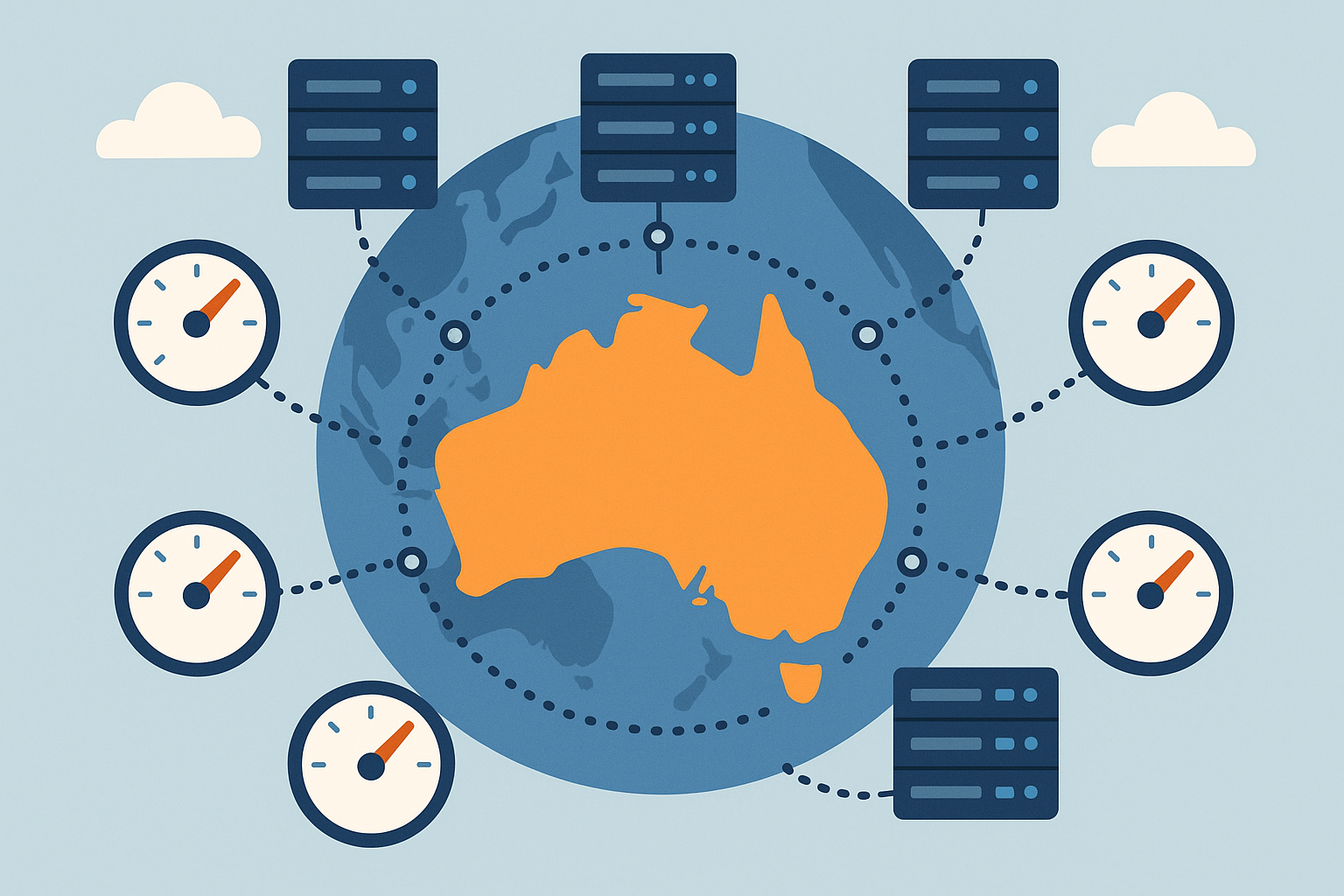
Look, if you’re feeling overwhelmed by all this technical stuff, that’s totally normal. Sydney’s market is tricky even for us SEO nerds who live and breathe this stuff.
If you’re struggling to implement these advanced local SEO strategies for your Sydney business, Local SEO Buzz specializes in exactly these kinds of sophisticated, location-specific optimizations. Their team understands Sydney’s unique digital landscape and can help you exploit the competitive gaps and opportunities that most businesses miss. From technical optimization to hyperlocal content strategies, they’ve got the expertise to help you dominate Sydney’s competitive local search environment.
Final Thoughts
After years of doing SEO in Sydney, here’s what I’ve learned: the city rewards businesses that actually understand how it works. Not the tourist version of Sydney, but the real version where people stress about bridge traffic and argue about development applications.
The strategies that work in Melbourne or Brisbane often fall flat here because they don’t account for Sydney’s specific quirks and challenges. Success comes from treating local SEO as a sophisticated, location-specific discipline rather than a generic checklist you can copy from anywhere.
The competitive advantage goes to businesses who get that Sydney isn’t just another city – it’s got its own rules, its own patterns, and its own opportunities that most people completely miss.
Whether it’s understanding harbor geography, exploiting transport network opportunities, or creating content that addresses real local concerns, the winners are the ones who do their homework and adapt their strategies to what actually works here.
The key thing to remember is that Sydney isn’t just another city – it’s a unique digital ecosystem that requires specialized knowledge and tailored strategies. The businesses that win here are the ones who understand that and adapt accordingly.


